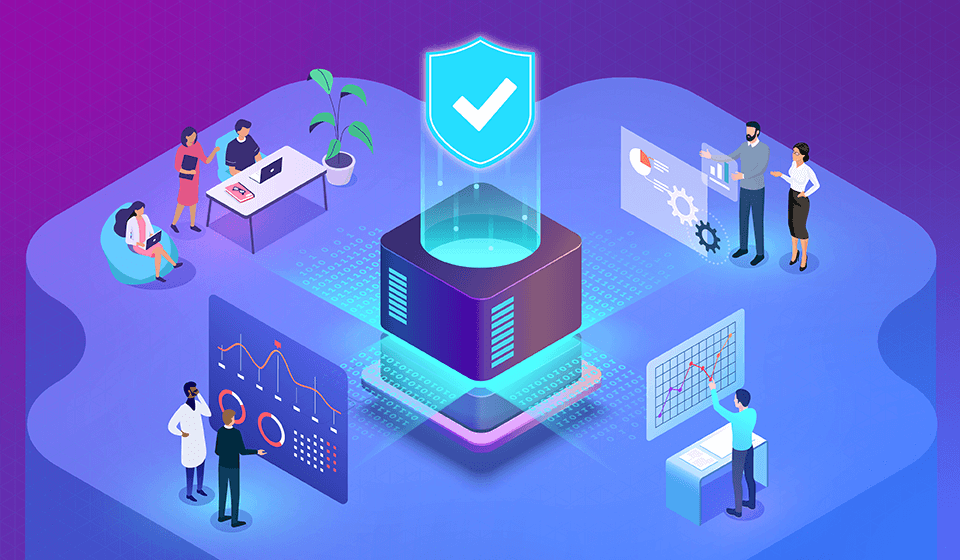Companies across industries are attempting to regain their footing as they enter a new decade. But even leading companies are struggling with their existing enterprise analytics and data infrastructure.
Over the past decade, “data rose to become a major source of competitive differentiation for businesses,” especially during the COVID-19 crisis of 2020, says McKinsey. Even so, enterprise companies in industries as diverse as banking and mining continue to grapple with hundreds of small data silos across multiple departments and locations, McKinsey reports.
Enterprise companies’ silos aren’t their only data-related struggles. Too many companies provide analytics access to only a small group of experts (e.g., data scientists), throttling the value analytics could bring to the larger organization, and many senior leaders lack visibility into the business-critical reporting advanced analytics can provide.
Fortunately, business leaders can take proactive steps to realize a much different future—one where employees enjoy universal, shared access to data; where a single analytics platform provides tools for each of their functions; and where senior leaders achieve a holistic view of insights from data analytics. These are the foundational elements of trust.
As we continue, we will take a closer look at how companies can achieve a “single version of the truth” of this kind for all their teams. We will also identify the four steps business decision-makers can take today to get started on this journey.
What does a “single version of the truth” in analytics mean?
The concept itself is simple: aligning all employees with a universal, centralized analytics tool — a single version of the truth — in a way that drives both individual and enterprise-wide results. Analytics platforms that facilitate this truth support employee decision-making at all levels of the organization, even among those employees with limited data skill sets. A platform of this kind would drive both individual and business results and would ensure all employees access insights from the same data, albeit through interfaces personalized for their unique roles.
Of course, there are some complications when attempting to put this into practice — not least of which is ensuring employees don’t use workarounds. You can’t really call something a “single version of the truth” if employees are using unapproved alternative tools — so-called “Shadow IT” — on the side.
This pursuit is already a rising trend and a realized accomplishment within dozens of industries. “Leading-edge platforms include out-of-the-box capabilities for analytics and automation and enable quick customization by letting users configure rather than code,” Forrester describes. “The results: reduced complexity and time-to-value … especially important as teams work from anywhere and include techies and creatives, as well as full-time and gig workers.”
Your pathway to achieving a single version of the truth
Despite the trends, companies cannot simply step into this new paradigm, nor can they expect to onboard their entire organizations to achieve this single version right away. They can, however, start with the following four steps to begin realizing value quickly, even as they continue on the path to this single version of the truth.
Step 1: Support data literacy and a winning data culture.
Proactively support data literacy programs that help all employees, especially those engaged in tedious manual processes. Employees who must regularly contact your existing IT personnel and data scientists for insights, for example, will jump at the opportunity to learn how to access those insights themselves. As you identify more practical use cases, you can begin building an inclusive literacy program that will help all employees over time and creates a lasting analytics culture.
Step 2: Help employees achieve their own data-driven success.
Employees will need to access analytics for differing purposes and in different capacities, even while accessing the same sources. Provide them each with an interface designed for their roles, with tools that are quick to add value to their individual decision-making processes. Within Pyramid, for example, we’ve built adaptive capabilities (such as Smart Insights and a NLQ Chat Bot) that augment the user experience for end-users, but give more advanced users powerful analytics tools—all derived from the same sanctioned sources.
Step 3: Transition multiple teams onto a single analytics platform.
Align these first three steps with broader departmental initiatives within the organization. You may find starting with one segment of the company before onboarding others helps you realize value quicker and strengthens your case when advocating for more teams to take the plunge. You can also use these early successes to advocate for adoption among other teams within the organization.
Step 4: Ensure the new tools takes root.
Employees must use the new collaborative tools within your platform, rather than relying on workarounds. The onus is on business leaders, however, to make this possible. Strive to achieve a deeper understanding of the needs, processes, and pain points among your teams. Employees are more likely to continue to use your new tools if they are realizing value from those tools in their individual capacities.
Getting started: Realizing the value of incremental progress
Achieving a single version of the truth within your organization may seem like a long and arduous task. But the steps you take now will provide inherent value early, even as you strive to bring the entire organization on board. Small successes in reducing silos and consolidating analytics within each critical business entity have value in and of themselves. As you press ahead with these four steps in other areas of your organization, you will achieve over time the companywide agility and resiliency you need to face down future disruptions.













